#mediaeval architecture
Explore tagged Tumblr posts
Text

Gloucestershire
#Arlington Row#Cotswolds#Gloucestershire#English villages#rustic#stone cottages#Middle Ages#mediaeval architecture#14th century#summertime#picturesque#rural britain#UK
20 notes
·
View notes
Text
A perennial garden in Dorset feels so quintessentially English.

Dorset
#Dorset#parish church#spring flowers#rural britain#tulips#springtime#wicker fence#mediaeval architecture#Gothic
165 notes
·
View notes
Text

An Archway with a View of a Medieval Castle by Wilhelm Steuerwaldt
#wilhelm steuerwaldt#art#archway#castle#castles#medieval#middle ages#architecture#mediaeval#europe#european#landscape#arch#german#germany
2K notes
·
View notes
Text
Fantasy Guide to Interiors
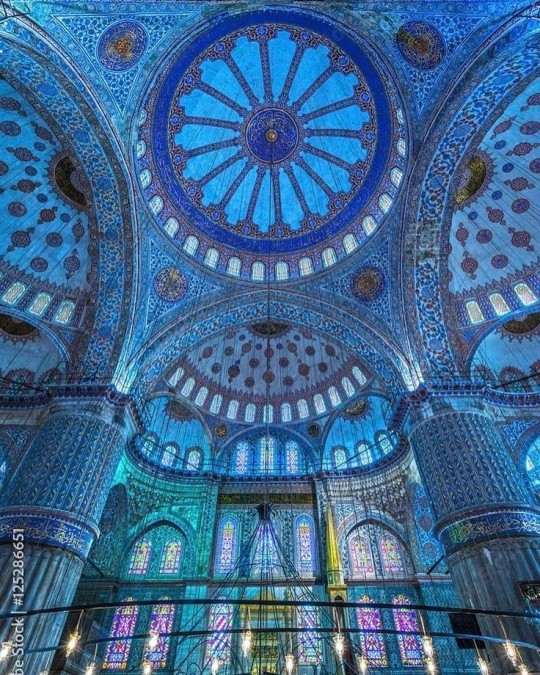
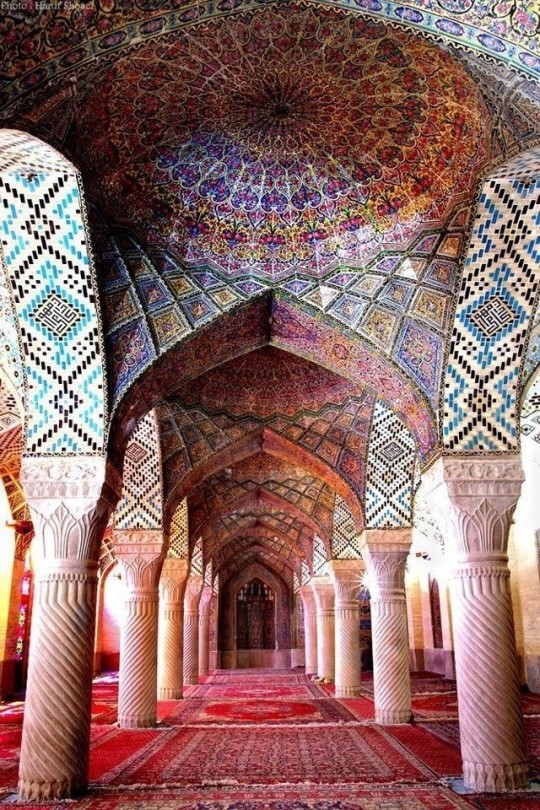
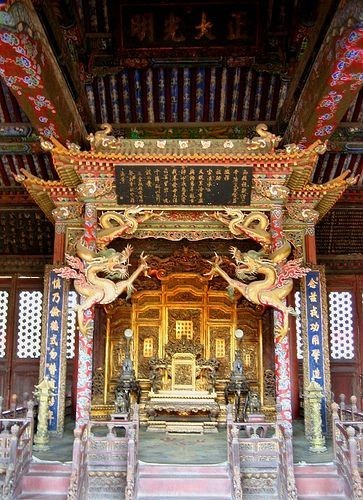
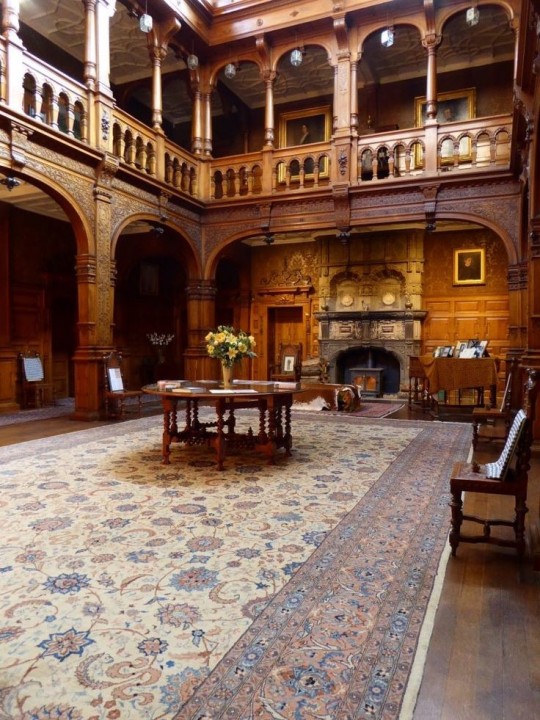
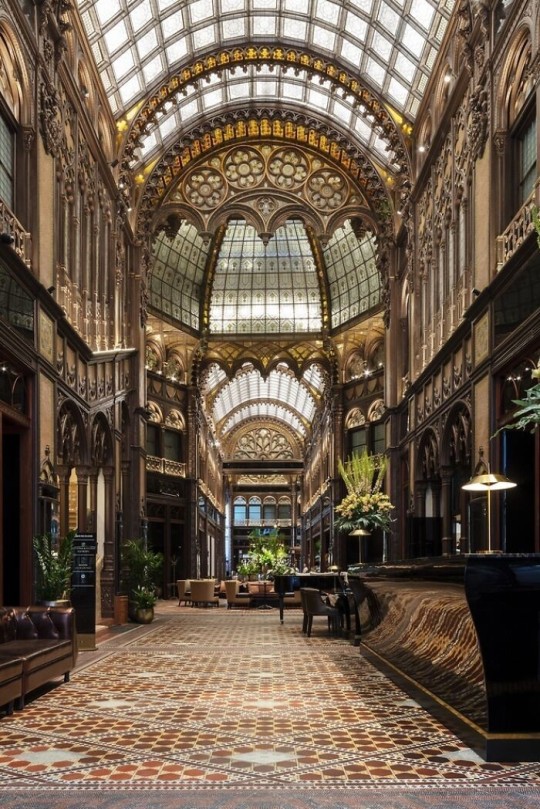
As a followup to the very popular post on architecture, I decided to add onto it by exploring the interior of each movement and the different design techniques and tastes of each era. This post at be helpful for historical fiction, fantasy or just a long read when you're bored.
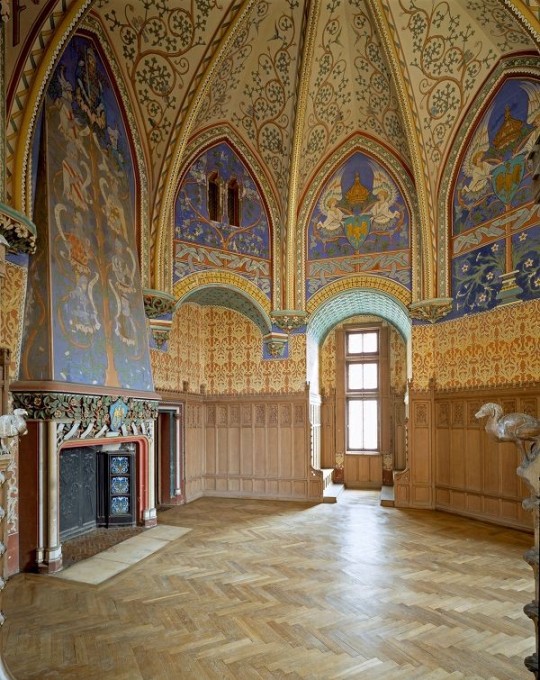
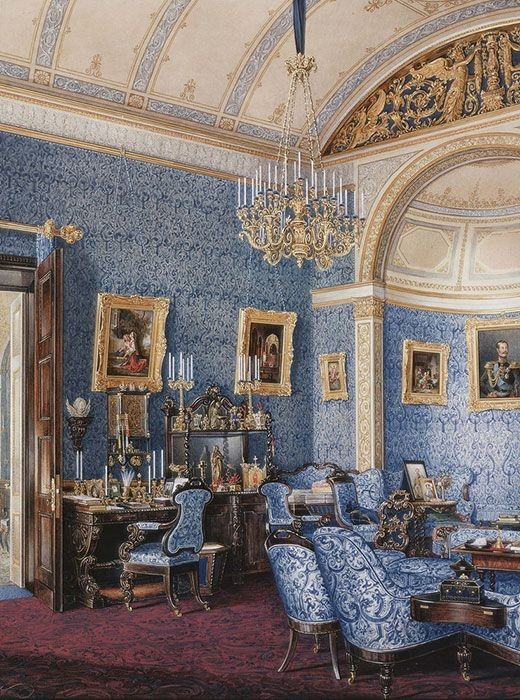
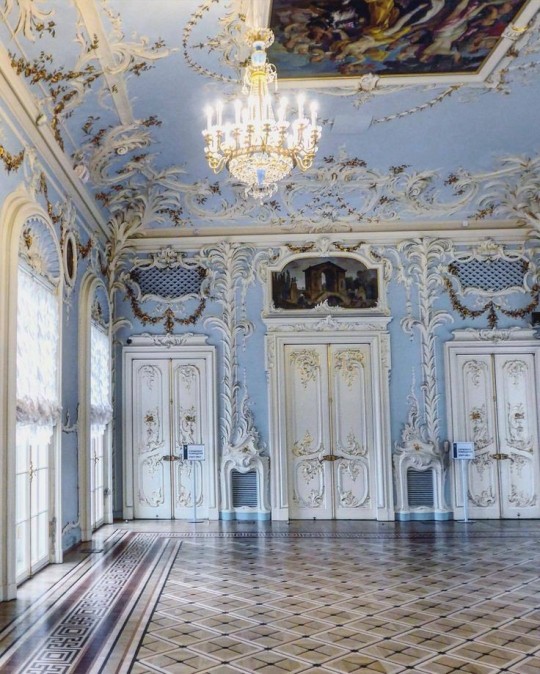
Interior Design Terms
Reeding and fluting: Fluting is a technique that consists a continuous pattern of concave grooves in a flat surface across a surface. Reeding is it's opposite.
Embossing: stamping, carving or moulding a symbol to make it stand out on a surface.
Paneling: Panels of carved wood or fabric a fixed to a wall in a continuous pattern.
Gilding: the use of gold to highlight features.
Glazed Tile: Ceramic or porcelain tiles coated with liquid coloured glass or enamel.
Column: A column is a pillar of stone or wood built to support a ceiling. We will see more of columns later on.
Bay Window: The Bay Window is a window projecting outward from a building.
Frescos: A design element of painting images upon wet plaster.
Mosaic: Mosaics are a design element that involves using pieces of coloured glass and fitted them together upon the floor or wall to form images.
Mouldings: ornate strips of carved wood along the top of a wall.
Wainscoting: paneling along the lower portion of a wall.
Chinoiserie: A European take on East Asian art. Usually seen in wallpaper.
Clerestory: A series of eye-level windows.
Sconces: A light fixture supported on a wall.
Niche: A sunken area within a wall.
Monochromatic: Focusing on a single colour within a scheme.
Ceiling rose: A moulding fashioned on the ceiling in the shape of a rose usually supporting a light fixture.
Baluster: the vertical bars of a railing.
Façade: front portion of a building
Lintel: Top of a door or window.
Portico: a covered structure over a door supported by columns
Eaves: the part of the roof overhanging from the building
Skirting: border around lower length of a wall
Ancient Greece
Houses were made of either sun-dried clay bricks or stone which were painted when they dried. Ground floors were decorated with coloured stones and tiles called Mosaics. Upper level floors were made from wood. Homes were furnished with tapestries and furniture, and in grand homes statues and grand altars would be found. Furniture was very skillfully crafted in Ancient Greece, much attention was paid to the carving and decoration of such things. Of course, Ancient Greece is ancient so I won't be going through all the movements but I will talk a little about columns.
Doric: Doric is the oldest of the orders and some argue it is the simplest. The columns of this style are set close together, without bases and carved with concave curves called flutes. The capitals (the top of the column) are plain often built with a curve at the base called an echinus and are topped by a square at the apex called an abacus. The entablature is marked by frieze of vertical channels/triglyphs. In between the channels would be detail of carved marble. The Parthenon in Athens is your best example of Doric architecture.
Ionic: The Ionic style was used for smaller buildings and the interiors. The columns had twin volutes, scroll-like designs on its capital. Between these scrolls, there was a carved curve known as an egg and in this style the entablature is much narrower and the frieze is thick with carvings. The example of Ionic Architecture is the Temple to Athena Nike at the Athens Acropolis.
Corinthian: The Corinthian style has some similarities with the Ionic order, the bases, entablature and columns almost the same but the capital is more ornate its base, column, and entablature, but its capital is far more ornate, commonly carved with depictions of acanthus leaves. The style was more slender than the others on this list, used less for bearing weight but more for decoration. Corinthian style can be found along the top levels of the Colosseum in Rome.
Tuscan: The Tuscan order shares much with the Doric order, but the columns are un-fluted and smooth. The entablature is far simpler, formed without triglyphs or guttae. The columns are capped with round capitals.
Composite: This style is mixed. It features the volutes of the Ionic order and the capitals of the Corinthian order. The volutes are larger in these columns and often more ornate. The column's capital is rather plain. for the capital, with no consistent differences to that above or below the capital.
Ancient Rome
Rome is well known for its outward architectural styles. However the Romans did know how to add that rizz to the interior. Ceilings were either vaulted or made from exploded beams that could be painted. The Romans were big into design. Moasics were a common interior sight, the use of little pieces of coloured glass or stone to create a larger image. Frescoes were used to add colour to the home, depicting mythical figures and beasts and also different textures such as stonework or brick. The Romans loved their furniture. Dining tables were low and the Romans ate on couches. Weaving was a popular pastime so there would be tapestries and wall hangings in the house. Rich households could even afford to import fine rugs from across the Empire. Glass was also a feature in Roman interior but windows were usually not paned as large panes were hard to make. Doors were usually treated with panels that were carved or in lain with bronze.
Ancient Egypt
Egypt was one of the first great civilisations, known for its immense and grand structures. Wealthy Egyptians had grand homes. The walls were painted or plastered usually with bright colours and hues. The Egyptians are cool because they mapped out their buildings in such a way to adhere to astrological movements meaning on special days if the calendar the temple or monuments were in the right place always. The columns of Egyptian where thicker, more bulbous and often had capitals shaped like bundles of papyrus reeds. Woven mats and tapestries were popular decor. Motifs from the river such as palms, papyrus and reeds were popular symbols used.
Ancient Africa
African Architecture is a very mixed bag and more structurally different and impressive than Hollywood would have you believe. Far beyond the common depictions of primitive buildings, the African nations were among the giants of their time in architecture, no style quite the same as the last but just as breathtaking.
Rwandan Architecture: The Rwandans commonly built of hardened clay with thatched roofs of dried grass or reeds. Mats of woven reeds carpeted the floors of royal abodes. These residences folded about a large public area known as a karubanda and were often so large that they became almost like a maze, connecting different chambers/huts of all kinds of uses be they residential or for other purposes.
Ashanti Architecture: The Ashanti style can be found in present day Ghana. The style incorporates walls of plaster formed of mud and designed with bright paint and buildings with a courtyard at the heart, not unlike another examples on this post. The Ashanti also formed their buildings of the favourite method of wattle and daub.
Nubian Architecture: Nubia, in modern day Ethiopia, was home to the Nubians who were one of the world's most impressive architects at the beginning of the architecture world and probably would be more talked about if it weren't for the Egyptians building monuments only up the road. The Nubians were famous for building the speos, tall tower-like spires carved of stone. The Nubians used a variety of materials and skills to build, for example wattle and daub and mudbrick. The Kingdom of Kush, the people who took over the Nubian Empire was a fan of Egyptian works even if they didn't like them very much. The Kushites began building pyramid-like structures such at the sight of Gebel Barkal
Japanese Interiors
Japenese interior design rests upon 7 principles. Kanso (簡素)- Simplicity, Fukinsei (不均整)- Asymmetry, Shizen (自然)- Natural, Shibumi (渋味) – Simple beauty, Yugen (幽玄)- subtle grace, Datsuzoku (脱俗) – freedom from habitual behaviour, Seijaku (静寂)- tranquillity.
Common features of Japanese Interior Design:
Shoji walls: these are the screens you think of when you think of the traditional Japanese homes. They are made of wooden frames, rice paper and used to partition
Tatami: Tatami mats are used within Japanese households to blanket the floors. They were made of rice straw and rush straw, laid down to cushion the floor.
Genkan: The Genkan was a sunken space between the front door and the rest of the house. This area is meant to separate the home from the outside and is where shoes are discarded before entering.
Japanese furniture: often lowest, close to the ground. These include tables and chairs but often tanked are replaced by zabuton, large cushions. Furniture is usually carved of wood in a minimalist design.
Nature: As both the Shinto and Buddhist beliefs are great influences upon architecture, there is a strong presence of nature with the architecture. Wood is used for this reason and natural light is prevalent with in the home. The orientation is meant to reflect the best view of the world.
Islamic World Interior
The Islamic world has one of the most beautiful and impressive interior design styles across the world. Colour and detail are absolute staples in the movement. Windows are usually not paned with glass but covered in ornate lattices known as jali. The jali give ventilation, light and privacy to the home. Islamic Interiors are ornate and colourful, using coloured ceramic tiles. The upper parts of walls and ceilings are usually flat decorated with arabesques (foliate ornamentation), while the lower wall areas were usually tiled. Features such as honeycombed ceilings, horseshoe arches, stalactite-fringed arches and stalactite vaults (Muqarnas) are prevalent among many famous Islamic buildings such as the Alhambra and the Blue Mosque.
Byzantine (330/395–1453 A. D)
The Byzantine Empire or Eastern Roman Empire was where eat met west, leading to a melting pot of different interior designs based on early Christian styles and Persian influences. Mosaics are probably what you think of when you think of the Byzantine Empire. Ivory was also a popular feature in the Interiors, with carved ivory or the use of it in inlay. The use of gold as a decorative feature usually by way of repoussé (decorating metals by hammering in the design from the backside of the metal). Fabrics from Persia, heavily embroidered and intricately woven along with silks from afar a field as China, would also be used to upholster furniture or be used as wall hangings. The Byzantines favoured natural light, usually from the use of copolas.
Indian Interiors
India is of course, the font of all intricate designs. India's history is sectioned into many eras but we will focus on a few to give you an idea of prevalent techniques and tastes.
The Gupta Empire (320 – 650 CE): The Gupta era was a time of stone carving. As impressive as the outside of these buildings are, the Interiors are just as amazing. Gupta era buildings featured many details such as ogee (circular or horseshoe arch), gavaksha/chandrashala (the motif centred these arches), ashlar masonry (built of squared stone blocks) with ceilings of plain, flat slabs of stone.
Delhi Sultanate (1206–1526): Another period of beautifully carved stone. The Delhi sultanate had influence from the Islamic world, with heavy uses of mosaics, brackets, intricate mouldings, columns and and hypostyle halls.
Mughal Empire (1526–1857): Stonework was also important on the Mughal Empire. Intricately carved stonework was seen in the pillars, low relief panels depicting nature images and jalis (marble screens). Stonework was also decorated in a stye known as pietra dura/parchin kari with inscriptions and geometric designs using colored stones to create images. Tilework was also popular during this period. Moasic tiles were cut and fitted together to create larger patters while cuerda seca tiles were coloured tiles outlined with black.
Chinese Interiors
Common features of Chinese Interiors
Use of Colours: Colour in Chinese Interior is usually vibrant and bold. Red and Black are are traditional colours, meant to bring luck, happiness, power, knowledge and stability to the household.
Latticework: Lattices are a staple in Chinese interiors most often seen on shutters, screens, doors of cabinets snf even traditional beds.
Lacquer: Multiple coats of lacquer are applied to furniture or cabinets (now walls) and then carved. The skill is called Diaoqi (雕漆).
Decorative Screens: Screens are used to partition off part of a room. They are usually of carved wood, pained with very intricate murals.
Shrines: Spaces were reserved on the home to honour ancestors, usually consisting of an altar where offerings could be made.
Of course, Chinese Interiors are not all the same through the different eras. While some details and techniques were interchangeable through different dynasties, usually a dynasty had a notable style or deviation. These aren't all the dynasties of course but a few interesting examples.
Song Dynasty (960–1279): The Song Dynasty is known for its stonework. Sculpture was an important part of Song Dynasty interior. It was in this period than brick and stone work became the most used material. The Song Dynasty was also known for its very intricate attention to detail, paintings, and used tiles.
Ming Dynasty(1368–1644): Ceilings were adorned with cloisons usually featuring yellow reed work. The floors would be of flagstones usually of deep tones, mostly black. The Ming Dynasty favoured richly coloured silk hangings, tapestries and furnishings. Furniture was usually carved of darker woods, arrayed in a certain way to bring peace to the dwelling.
Han Dynasty (206 BC-220 AD): Interior walls were plastered and painted to show important figures and scenes. Lacquer, though it was discovered earlier, came into greater prominence with better skill in this era.
Tang Dynasty (618–907) : The colour palette is restrained, reserved. But the Tang dynasty is not without it's beauty. Earthenware reached it's peak in this era, many homes would display fine examples as well. The Tang dynasty is famous for its upturned eaves, the ceilings supported by timber columns mounted with metal or stone bases. Glazed tiles were popular in this era, either a fixed to the roof or decorating a screen wall.
Romanesque (6th -11th century/12th)
Romanesque Architecture is a span between the end of Roman Empire to the Gothic style. Taking inspiration from the Roman and Byzantine Empires, the Romanesque period incorporates many of the styles. The most common details are carved floral and foliage symbols with the stonework of the Romanesque buildings. Cable mouldings or twisted rope-like carvings would have framed doorways. As per the name, Romansque Interiors relied heavily on its love and admiration for Rome. The Romanesque style uses geometric shapes as statements using curves, circles snf arches. The colours would be clean and warm, focusing on minimal ornamentation.
Gothic Architecture (12th Century - 16th Century)
The Gothic style is what you think of when you think of old European cathedrals and probably one of the beautiful of the styles on this list and one of most recognisable. The Gothic style is a dramatic, opposing sight and one of the easiest to describe. Decoration in this era became more ornate, stonework began to sport carving and modelling in a way it did not before. The ceilings moved away from barreled vaults to quadripartite and sexpartite vaulting. Columns slimmed as other supportive structures were invented. Intricate stained glass windows began their popularity here. In Gothic structures, everything is very symmetrical and even.
Mediaeval (500 AD to 1500)
Interiors of mediaeval homes are not quite as drab as Hollywood likes to make out. Building materials may be hidden by plaster in rich homes, sometimes even painted. Floors were either dirt strewn with rushes or flagstones in larger homes. Stonework was popular, especially around fireplaces. Grand homes would be decorated with intricate woodwork, carved heraldic beasts and wall hangings of fine fabrics.
Renaissance (late 1300s-1600s)
The Renaissance was a period of great artistry and splendor. The revival of old styles injected symmetry and colour into the homes. Frescoes were back. Painted mouldings adorned the ceilings and walls. Furniture became more ornate, fixed with luxurious upholstery and fine carvings. Caryatids (pillars in the shape of women), grotesques, Roman and Greek images were used to spruce up the place. Floors began to become more intricate, with coloured stone and marble. Modelled stucco, sgraffiti arabesques (made by cutting lines through a layer of plaster or stucco to reveal an underlayer), and fine wall painting were used in brilliant combinations in the early part of the 16th century.
Tudor Interior (1485-1603)
The Tudor period is a starkly unique style within England and very recognisable. Windows were fixed with lattice work, usually casement. Stained glass was also in in this period, usually depicting figures and heraldic beasts. Rooms would be panelled with wood or plastered. Walls would be adorned with tapestries or embroidered hangings. Windows and furniture would be furnished with fine fabrics such as brocade. Floors would typically be of wood, sometimes strewn with rush matting mixed with fresh herbs and flowers to freshen the room.
Baroque (1600 to 1750)
The Baroque period was a time for splendor and for splashing the cash. The interior of a baroque room was usually intricate, usually of a light palette, featuring a very high ceiling heavy with detail. Furniture would choke the room, ornately carved and stitched with very high quality fabrics. The rooms would be full of art not limited to just paintings but also sculptures of marble or bronze, large intricate mirrors, moldings along the walls which may be heavily gilded, chandeliers and detailed paneling.
Victorian (1837-1901)
We think of the interiors of Victorian homes as dowdy and dark but that isn't true. The Victorians favoured tapestries, intricate rugs, decorated wallpaper, exquisitely furniture, and surprisingly, bright colour. Dyes were more widely available to people of all stations and the Victorians did not want for colour. Patterns and details were usually nature inspired, usually floral or vines. Walls could also be painted to mimic a building material such as wood or marble and most likely painted in rich tones. The Victorians were suckers for furniture, preferring them grandly carved with fine fabric usually embroidered or buttoned. And they did not believe in minimalism. If you could fit another piece of furniture in a room, it was going in there. Floors were almost eclusively wood laid with the previously mentioned rugs. But the Victorians did enjoy tiled floors but restricted them to entrances. The Victorians were quite in touch with their green thumbs so expect a lot of flowers and greenery inside. with various elaborately decorated patterned rugs. And remember, the Victorians loved to display as much wealth as they could. Every shelf, cabinet, case and ledge would be chocked full of ornaments and antiques.
Edwardian/The Gilded Age/Belle Epoque (1880s-1914)
This period (I've lumped them together for simplicity) began to move away from the deep tones and ornate patterns of the Victorian period. Colour became more neutral. Nature still had a place in design. Stained glass began to become popular, especially on lampshades and light fixtures. Embossing started to gain popularity and tile work began to expand from the entrance halls to other parts of the house. Furniture began to move away from dark wood, some families favouring breathable woods like wicker. The rooms would be less cluttered.
Art Deco (1920s-1930s)
The 1920s was a time of buzz and change. Gone were the refined tastes of the pre-war era and now the wow factor was in. Walls were smoother, buildings were sharper and more jagged, doorways and windows were decorated with reeding and fluting. Pastels were in, as was the heavy use of black and white, along with gold. Mirrors and glass were in, injecting light into rooms. Gold, silver, steel and chrome were used in furnishings and decor. Geometric shapes were a favourite design choice. Again, high quality and bold fabrics were used such as animal skins or colourful velvet. It was all a rejection of the Art Noveau movement, away from nature focusing on the man made.
Modernism (1930 - 1965)
Modernism came after the Art Deco movement. Fuss and feathers were out the door and now, practicality was in. Materials used are shown as they are, wood is not painted, metal is not coated. Bright colours were acceptable but neutral palettes were favoured. Interiors were open and favoured large windows. Furniture was practical, for use rather than the ornamentation, featuring plain details of any and geometric shapes. Away from Art Deco, everything is straight, linear and streamlined.
#This took forever#I'm very tired#But enjoy#I covered as much as I could find#Fantasy Guide to interiors#interior design#Architecture#writings#writing resources#Writing reference#Writing advice#Writer's research#writing research#Writer's rescources#Writing help#Mediaeval#Renaissance#Chinese Interiors#Japanese Interiors#Indian interiors#writing#writeblr#writing reference#writing advice#writer#spilled words#writers
3K notes
·
View notes
Text
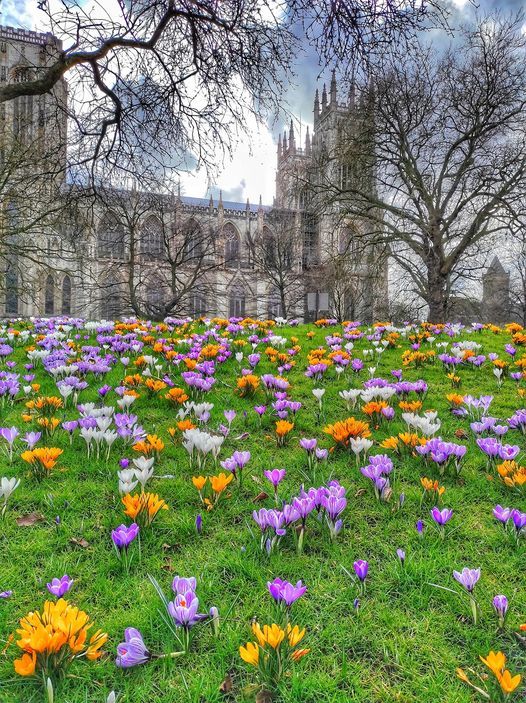
Flowers in the Dean's Yard by York Minster herald the early spring
#Dean's Yard#York Minster#springtime#crocuses#Yorkshire#English cathedrals#mediaeval architecture#green space#UK
359 notes
·
View notes
Text
Perched above the North Sea, Dunnottar was a key Scottish fortress.

#Dunnottar Castle#Stonehaven#Aberdeenshire#North Sea#UK#Scottish castles#mediaeval architecture#fortress#1392
334 notes
·
View notes
Text

Astolfo in his turn is lured to Atlante's Palace of Illusions (Orlando Furioso) by Gustave Doré
#gustave doré#art#orlando furioso#astolfo#knight#knights#atlante#palace#enchanted#enchantments#magic#middle ages#medieval#chivalric romance#chivalry#mediaeval#mythology#europe#european#illusions#architecture#ludovico ariosto#magician#sorcerer#necromancer#castle#paladins#paladin#atlantes#magical
694 notes
·
View notes
Text

mediaeval chapel
0 notes
Text
Edinburgh

Old Town
#Old Town#Edinburgh#Scotland#Scottish capital#mediaeval#city centre#stone buildings#architecture#cultural heritage#pedestrians#street view#Scottish history#Auld Reekie#UK
225 notes
·
View notes
Text

Wiltshire
#Salisbury Cathedral#Wiltshire#English cathedrals#sunrise#UK#early morning#aerial view#dawn#English countryside#mediaeval#tallest spire#horizon#gothic architecture
83 notes
·
View notes
Text
📍Corfu Greece 🇬🇷
Corfu Town sits on a small peninsula about halfway down the east coast of the island, a site chosen for its natural port and the two peaks that lent themselves to fortress-building. The small mediaeval town that grew up during Angevin rule (1267-1368) was enclosed by thick defensive walls and guarded by two imposing castles that looked out to sea and the Greek mainland. But it was under the Venetians, who stayed for some 400 years (from 1386-1797) that Corfu Town really prospered.
Corfu's significant role in Mediterranean history was pre- destined thanks to its strategic position at the mouth of the Adriatic Sea. Whoever controlled Corfu had a good chance of controlling the most important trade and military routes between east and west and north and south. The Greeks knew this, as did the Romans, the Goths, the Byzantines, the Normans, the Neapolitan Angevins, the Venetians, the French and the British. All came and went, leaving behind them a multi- layered historical and cultural heritage that is still very much in evidence today.
The Venetians brought not only their great commercial know- how but also their architectural prowess and soon Corfu Town became a thriving economic centre with northern-Adriatic flair and impregnable defences (they significantly updated the Old Fortress and built the New Fortress).
Corfu Town was badly bombed by German forces during the Second World War, with almost a quarter of the town being reduced to rubble. Fortunately, much of the mediaeval quarter, known as the Campiello, survived and in 2007 UNESCO awarded Corfu Town the status World Heritage Site.
Καλημέρα Ελλ��δα μου!!🇬🇷
21 notes
·
View notes
Text
The ghost of Anne Boleyn is rumoured to haunt its mediaeval halls

The Daffodils have started blooming at Hever Castle, Kent.
Spring will soon be here.
#Hever Castle#Kent#Anne Boleyn#English castles#execution#mediaeval architecture#Tudor history#daffodils#manor house#English countryside#rural estate#springtime#English gardens
387 notes
·
View notes
Text

Cologne Cathedral
#cologne cathedral#cologne#koln#köln#germany#gothic architecture#gothic cathedrals#gothic#architecture#cathedral#cathedrals#medieval#middle ages#christianity#christian#christoph seelbach#europe#european#mediaeval#photograph#photography
341 notes
·
View notes
Text
The Three Students pt 2
We are in (probably) Oxbridge and have a potential cheating scandal (quelle horreur!), three suspects and a "forgetful" servant who left the room to the papers unlocked.
Our suspects are: the hardworking 'manly' scholarship student (who needs the money), the Indian student (who knew the papers were there and may need the grade, but didn't get a lot of description so I think we're mostly supposed to suspect him because racism and opportunity??) and the rich lazy kid (who needs the grade because he hasn't done the work).
Place your bets, please.
“I should like to have a peep at each of them,” said Holmes. “Is it possible?” “No difficulty in the world,” Soames answered. “This set of rooms is quite the oldest in the college, and it is not unusual for visitors to go over them. Come along, and I will personally conduct you.”
You just let random strangers into your students' rooms?

There were some really curious pieces of mediaeval domestic architecture within. Holmes was so charmed with one of them that he insisted on drawing it on his note-book, broke his pencil, had to borrow one from our host, and finally borrowed a knife to sharpen his own.
I love how even in his later accounts, Watson pretends not to know that Holmes is putting on an act. Yes, he was taken with the architecture, this had no ulterior motive and absolutely wasn't to scope out the pencils and knife of the student. It was purely architecture-based enthusiasm that led to this.
The same curious accident happened to him in the rooms of the Indian...
Really? The same thing happened in that room!?

Also, I'm not going to bother comparing the descriptions of the two students because that way lies racism and I think we can all see it.
Only at the third did our visit prove abortive. The outer door would not open to our knock, and nothing more substantial than a torrent of bad language came from behind it. “I don't care who you are. You can go to blazes!” roared the angry voice. “To-morrow's the exam, and I won't be drawn by anyone.”
Honestly, good for you. They've got no business coming into your room anyway. And also, good for you for studying (if you're telling the truth) I don't remember your name random rich student, but so far as actually meeting you goes, I fully support you. Keep that door closed. Fuck the lot of them.
“A rude fellow,” said our guide, flushing with anger as we withdrew down the stair. “Of course, he did not realize that it was I who was knocking, but none the less his conduct was very uncourteous, and, indeed, under the circumstances rather suspicious.”
Or... not suspicious because he's the only one actually studying when there's an exam tomorrow that seems to be vitally important. (Sure, he might not be studying, maybe he has someone in there with him... in which case, also good for him, I guess).
“Can you tell me his exact height?” he asked. “Really, Mr. Holmes, I cannot undertake to say. He is taller than the Indian, not so tall as Gilchrist. I suppose five foot six would be about it.”
You what now?
He has a name! I don't remember it right now because you haven't mentioned it yet this section (I also don't remember the rich kid's name), but he has a name. You literally teach him. You know his name! Seriously? Seriously?
(His name is Daulat Ras, I checked the first part of the story. If it turns out to be him (which it won't because it's Gilchrist who doesn't appear to be studying even though he clearly has the most riding on this exam) then I am hereby pre-emptively pardoning him on grounds of his teacher being shit because he cannot be bothered to remember his name.)

Our guide cried aloud in his astonishment and dismay. “Good gracious, Mr. Holmes, you are surely not going to leave me in this abrupt fashion! You don't seem to realize the position. To-morrow is the examination. I must take some definite action to-night. I cannot allow the examination to be held if one of the papers has been tampered with. The situation must be faced.”
Calm down, my dude. It's really not the end of the world. Have a sit down, get a glass of brandy. Keep the brain fever at bay.
“The foul-mouthed fellow at the top. He is the one with the worst record. And yet that Indian was a sly fellow also. Why should he be pacing his room all the time?”
Thank you, Watson, for validating my suspicions by disagreeing with them. I always feel better about my ideas when they don't match yours. No thanks for the racism, but at least you didn't just choose Ras, and you're also giving a secondary reason for suspecting him.
“He looked at us in a queer way.”
... ahem.
“So would you if a flock of strangers came in on you when you were preparing for an examination next day, and every moment was of value."
Also that.
“Why, Bannister, the servant. What's his game in the matter?”
IKR, Holmes, you get me. You understand. Clearly the guy is overly worried and who walks all the way across the room to sit down when they're feeling faint.
But Bannister would have to be working with someone. Either one of the three, or a hypothetical fourth student he is related to. He could be related to Gilchrist, I guess. (What is rich boy's name? I still can't remember, luckily I am not his tutor, so I don't have to feel bad about it.)
“He impressed me as being a perfectly honest man.”
Watson, my sweet summer child. Apart from all your many faults, biases and prejudices, you are so naive and trusting.
All were agreed that one could be ordered, but that it was not a usual size of pencil and that it was seldom kept in stock.
Does Bannister have, like, some illness that means he can't hold standard-sized pencils? Arthritis of some kind? But everyone seems pretty sure that he's not directly lying about anything. Unless he is cunning and running a whole business of copying translations then selling them to students.
"By Jove! my dear fellow, it is nearly nine, and the landlady babbled of green peas at seven-thirty. What with your eternal tobacco, Watson, and your irregularity at meals, I expect that you will get notice to quit and that I shall share your downfall"
Yeah, Watson. This is clearly your fault. How dare you! The poor landlady making you peas when you're dragging Holmes out to stationers at all hours. You should be ashamed of yourself.

At eight in the morning he came into my room just as I finished my toilet.
Yet again, I know toilet had a different meaning, but picturing Holmes walking into the bathroom while Watson's literally sitting on the toilet and the two of them carrying out a perfectly normal conversation is hilarious to me.
"I have put in two hours' hard work and covered at least five miles, with something to show for it. Look at that!” He held out his hand. On the palm were three little pyramids of black, doughy clay.
Ah yes, the random clay, which all I can think of is putty eraser or some sort of carbon copy thing.
“You will kindly close the door,” said Holmes. “Now, Bannister, will you please tell us the truth about yesterday's incident?”
Yeah, Bannister. Are you secretly the head of a cheating ring?
“Well, then, I must make some suggestions to you. When you sat down on that chair yesterday, did you do so in order to conceal some object which would have shown who had been in the room?”
Ah, yeah, that makes sense. Whoever did do it was kind of rubbish at covering their tracks clearly this is not something they do often.
“There was no man, sir.”

So it's either a girl, or Odysseus...?
He was a fine figure of a man, tall, lithe, and agile, with a springy step and a pleasant, open face.
Seriously, Watson, we get it, you think he's hot. You've been very lonely since your wife died. You don't need to describe how hot he is every time we see him.
Wait, it was the tutor who had that weird use of 'manly' the first time around, wasn't it?
If Gilchrist turns out to be a girl in disguise that line is going to be so funny.
"We want to know, Mr. Gilchrist, how you, an honourable man, ever came to commit such an action as that of yesterday?” The unfortunate young man staggered back and cast a look full of horror and reproach at Bannister. “No, no, Mr. Gilchrist, sir; I never said a word—never one word!” cried the servant.
Well now you have. People really need to get better at committing crimes. After it's happened, you know nothing about anything. No matter how much people ask or how much they claim to know, you know nothing. You are blissfully ignorant of the whole affair. What affair? Oh, someone's cheating? How terrible!
“No, but you have now,” said Holmes.
Is this the first documented use of this trope? Because it can't have happened much before now.
The Indian I also thought nothing of.
His name.
Is.
DAULAT RAS!
"Such an idea was absurd. I was measuring how tall a man would need to be in order to see as he passed what papers were on the central table. I am six feet high, and I could do it with an effort."
So all Watson's descriptions were just to point out how tall Gilchrist is? That's all?
"He put his shoes on the table. What was it you put on that chair near the window?” “Gloves,” said the young man.
Dude. My dude. You wear the gloves. I know this story was published a year before the first use of fingerprints in a criminal case in England, but my dude. You do not leave your gloves on a chair.
“Yes, sir, I have, but the shock of this disgraceful exposure has bewildered me. I have a letter here, Mr. Soames, which I wrote to you early this morning in the middle of a restless night. It was before I knew that my sin had found me out. Here it is, sir. You will see that I have said, ‘I have determined not to go in for the examination. I have been offered a commission in the Rhodesian Police, and I am going out to South Africa at once.’”
...well that's a twist.
You're seriously going to leave the country and go be a colonialist police officer in Africa. Because... you cheated on a test. Leaving the country seems a bit extreme.
"Time was, sir, when I was butler to old Sir Jabez Gilchrist, this young gentleman's father. When he was ruined I came to the college as servant, but I never forgot my old employer because he was down in the world. I watched his son all I could for the sake of the old days."
So not related to him, but associated with him. Yeah, that tracks. Servants are so loyal in these stories (apart from when they aren't, I suppose).
Another person called Jabez.

"As to you, sir, I trust that a bright future awaits you in Rhodesia. For once you have fallen low. Let us see in the future how high you can rise.”
I mean... I'm not entirely comfortable with this turn of events. I feel like 'police officer in the colonial British Empire' is pretty low, in the grand scheme of things.
And I never was reminded what the rich kid's name was, and I think I'm going to leave it that way. ACD needs to stop forgetting character's names, it makes it far too easy to guess who the culprit is. Also, it makes all your characters more racist.
Is it that guy, that guy, or Mr Diddit?
Next time, The Solitary Cyclist, which is one of my favourites, so I probably won't be speculating as I've read it a lot.
21 notes
·
View notes
Text
Modern Art of Bahia Museum’s Unique Heritage Collection

Bahian Museum of Art
Through the most recognisable pieces in collection, which are now digitally available, discover the colourful tapestry of modern Brazilian art, from historical roots to contemporary voices.
Nestled in a picturesque architectural complex on Salvador’s beachfront is one of Brazil’s most significant modern art organizations. Google’s is thrilled to present the rich legacy collection of the Museum of Modern Art of Bahia to a worldwide audience for the first time. This collection perfectly embodies the lively spirit of Brazil.
Through a partnership with Google Arts & Culture, more than 70 of Google’s collection’s paintings have been digitised in extremely high resolution, making the MAM-Bahia experience accessible online. Now, visitors from all over the world can explore Google’s digital collection and learn about the tales that distinguish our museum. Here are three highlights that are not to be missed to get you started:
Going from Manor to Museum
Explore the rich past of Solar do Unhão, the stunning coastal community home to the Museum. Discover how this ancient monument, which dates back to the 16th century, changed over time and became the great cultural hub it is today thanks to the ideas of architect Lina Bo Bardi.
The most significant facility for modern and contemporary art in the state of Bahia is the Museum of Modern Art of Bahia. Its breathtaking site, the mediaeval mansion Solar do Unhão, overlooking the ocean and surrounded by lush foliage, lends an extra degree of beauty to the art experience.
Constructed in the 17th century, the Solar do Unhão has an interesting history, having passed through the hands of affluent families, Benedictines, and even a snuff factory in the early 1900s.
It was first mentioned in writing in the sixteenth century. Gabriel Soares de Sousa, a Portuguese coloniser, farmer, and historian, was the owner. They left the region to the Benedictines of Bahia in will after passing away on an expedition close to the Paraguaçu River’s sources.
Italian-Brazilian architect created the Museum of Modern Art of Bahia vision and was its first director from 1959 to 1963. They is well recognized for creating the Museum of Art of São Paulo (MASP) project.
The Rubem Valentim Pavilion and a new Sculpture Garden were added to the museum area in 1998.
Presently, MAM-BA’s exhibition spaces feature well-known artists from Brazil and beyond, solidifying the museum’s position as a major player in the country’s contemporary art landscape.
In addition to art shows, the museum hosts a busy cultural schedule. A vibrant community of learning and involvement is fostered by the museum through continuing educational programs and multilingual events.
Enlarge the assortment
Discover about 70 high-definition digital masterpieces from the MAM-Bahia collection thanks to Google Arts & Culture. From modernist classics like Tarsila do Amaral and Rubem Valentim to contemporary artists like Bob Wolfenson and Panmela Castro, explore the brushstrokes and uncover hidden elements in paintings.
Modernist Icon Tarsila do Amaral
The famous Brazilian artist Tarsila do Amaral (1886–1973) used startling colours and compositions. Manor to Museum used Brazilian themes and sceneries in her ‘Modern Art’.
An Up-Close Look at Tarsila’s “O Touro”
Let’s take a closer look at Tarsila do Amaral’s well-known “O Touro.” Observe how the strong visuals and vivid colours express the tenacity and resiliency of Brazilian culture. Bold, geometric shapes are used to symbolise the bull, a symbol of both industry and nature.
Tarsila do Amaral used European avant-garde, especially cubism, but Manor to Museum also created her own personal style by fusing Brazilian colours and ideas into her works. This resulted in a genuinely original artistic voice.
Produced in 1928, this piece of art represents a turning point in her creative development. It’s reminiscent of her previous “Pau-Brasil” (Brazilwood) style, but it’s also deeply based in her “Antropofagia” (Anthropophagy) period.
There is something gigantic about the bull, the main character, that goes beyond realism. Its geometric and simple design is reminiscent of the early 20th century cubist influences.
Tarsila embraced ‘ugly’ or inoffensive colours like violet pink and pure blue, which were deemed to be daring and unfashionable at the time. Her devotion to artistic innovation and pushing limits was evident in this audacious decision.
Viewers are still drawn to the artwork because of its vibrant colour scheme, straightforward shapes, and surreal atmosphere, which entice us to explore a fanciful vision of the Brazilian countryside.
Highlighting Black Art
Salvador’s cultural landscape is enriched with African heritage. Without the contributions of Black Artists, whose works reflect the influence of Afro-Brazilian faiths, customs, and people, Bahia’s art would not be the same. Learn about some of the well-known names that comprise the museum’s collection and the ways in which up-and-coming artists are realising their ideas and cultural legacies.
Salvador, Bahia’s lively capital, is a distinctive destination due to its African roots. The city has the most African descendants worldwide.
Emanoel Araújo
Emanoel Araújo (1940-2022) incorporated Afro-Brazilian culture into his prints, paintings, and sculptures. Emanoel Araújo’s attention to Afro-Brazilian heritage is visible in his paintings.
Araújo’s impact extended beyond galleries and museums. As the director of the Pinacoteca do Estado de São Paulo and later the Afro Brazil Emanoel Araújo Museum, he was honoured following his passing.
Panmela Castro
Powerful Brazilian artist and activist Panmela Castro (b. 1981) promotes women’s rights and social justice through her art. Her murals, paintings, and performances address gender equality and feminine identity.
In this picture, the artist depicts Federal University of Bahia scholar Ana Cláudia Lemos Pacheco, who studies the “solitude of the Black woman”.
Juarez Paraíso
Juarez Paraíso, a notable Brazilian artist (b. 1934), works in sculpture, painting, and printmaking. Paraíso has greatly influenced the art scene in Bahia and Brazil. His art is modernist with a twist.
Google’s uses interlocking circular structures that resemble organic shapes. His emphasis on circularity and organic forms distinguishes him from geometric modernism.
Tiago Sant’Ana
Contemporary Brazilian artist Tiago Sant’Ana (b. 1990) is making waves with his thought-provoking paintings on race, history, and power.
The “Sugar Shoes” series emphasises freedom’s precarious balance. These sugar shoes represent Black liberation. Their impending dissolving in seawater highlights their newfound citizenship’s vulnerability.
Anderson AC
Versatility defines Anderson AC (b. 1979). He works in painting, graffiti, collage, photography, video, and installation. Memory, history, and past-present links are common topics in his art.
His creations often start with found objects, giving them new life. This shows his interest in personal and collective histories.
Read more on govindhtech.com
#ModernArt#BahiaMuseum#UniqueHeritageCollection#google#Googledigitalcollection#Memory#uses#AndersonAC#JuarezParaíso#PanmelaCastro#EmanoelAraújo#HighlightingBlackArt#technology#technews#news#govindhtech
2 notes
·
View notes
Text
Scottish baronial architecture has a romantic style that's all its own.

Aldourie Castle, Loch Ness, Inverness, United Kingdom,
Chris Horwood Photography
#Aldourie Castle#Inverness#Scottish Highlands#Loch Ness#baronial architecture#mediaeval#towers#crenellations#UK#cupolas#parapets#fortress#saltire flag#Scottish castles
760 notes
·
View notes